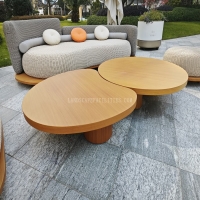Welcome to the website for landscape facilities products and knowledge.
How does the bin’s design ensure it remains easy to use for individuals with cognitive impairments?
For individuals with cognitive impairments such as dementia or developmental disabilities, everyday tasks like disposing of waste can pose significant challenges. Thoughtfully designed bins address these difficulties by incorporating intuitive features that promote independence and reduce confusion.
1. Clear Visual Cues: High-contrast colors and bold labels help users distinguish between different types of bins (e.g., recycling vs. general waste). Icons or pictograms replace complex text instructions, making the purpose of each bin instantly recognizable.
2. Simple Opening Mechanisms: Bins with touch-free sensors or large, easy-to-press pedals eliminate the need for fine motor skills or complex steps. Some designs feature open-top configurations to minimize frustration.
3. Consistent Placement: Standardizing bin locations in public or residential spaces reduces disorientation. Familiarity with setup helps users build routine and confidence.
4. Tactile Feedback: Textured surfaces or audible cues (like a click when the lid opens) provide sensory confirmation, reinforcing correct usage.
5. Durability and Safety: Rounded edges, non-slip bases, and lightweight materials prevent accidents while ensuring long-term usability.
By prioritizing accessibility, these designs empower individuals with cognitive impairments to participate in waste management independently, fostering dignity and environmental responsibility.
Related search:

Recommendation
Elliptical metal outdoor table with nested design, resembling wood grain, round table